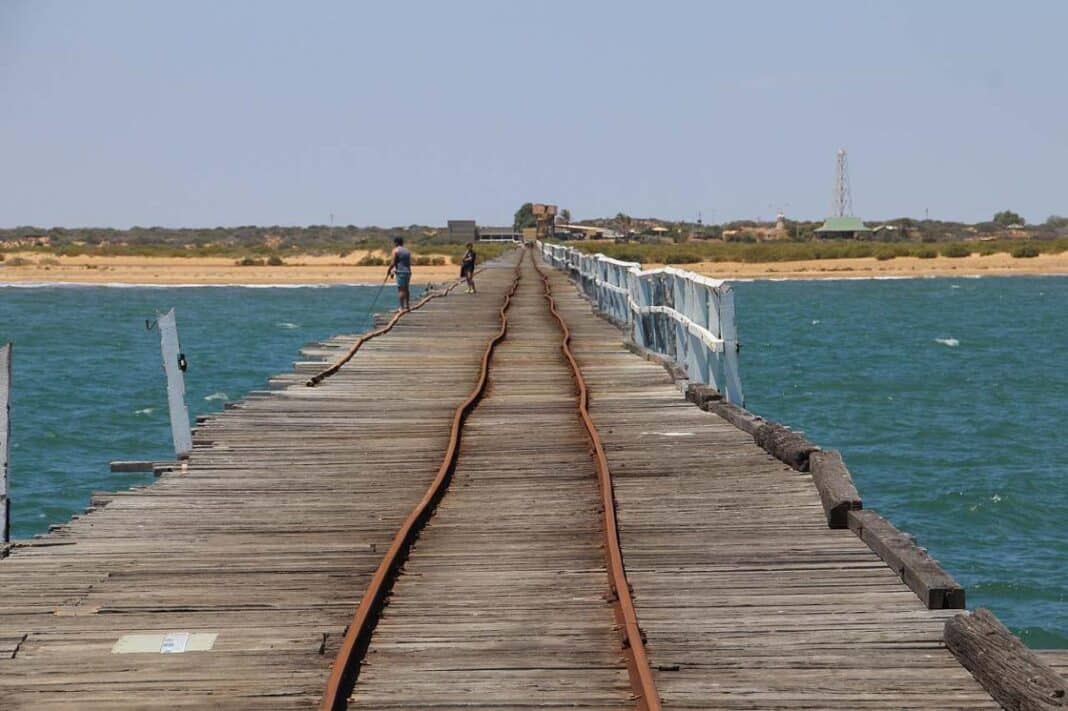Some of Western Australia’s most revered heritage icons are being repaired with exotic hardwood as the native logging ban constrains supplies of home-grown timber.
The Heritage Council of WA has scrambled to find alternative hardwoods for anyone embarking on repairs of heritage-listed buildings and structures as supplies of jarrah and marri dwindle following the ban, which was announced in 2021 and came into effect January 1st.
The council’s annual report described the lack of WA-grown hardwood as a significant issue for large-scale heritage projects. One such project is the $4.5 million refurbishment of a portion of the Carnarvon One Mile Jetty, partially destroyed by Cyclone Seroja in April 2021.
The Department of Transport released a tender last year for 920 4.8-metre lengths of jarrah decking to complete the project but was forced to broaden the scope to any suitable hardwood. The department eventually sourced $357,000 worth of Merbau, a hardwood logged in Southeast Asia, to fix the jetty.
The council’s revelation angered long-time opponents of the ban, including WA forestry and timber industry consultant John Clarke, who told the Sydney Morning Herald that the problem was a perverse outcome of a ban purely for political reasons.
Last year, the department approached Mr Clarke to help with the Carnarvon jetty tender and told them: “They are dreaming about if they want that much Jarrah.” He said using exotic timber in iconic WA buildings and structures did not sit right with him.
“The whole thing’s a bloody joke,” Mr Clarke said. “What about Parliament House? You go into Parliament House, which is lined with beautiful jarrah.
“One day, that might need to be upgraded, repaired, and replaced.”
“Can you imagine parliament being lined with Merbau?”
John Clarke, who hepped the Heritage Council of WA source timbers for the Carnarvon jetty.
“The whole logging ban, I’ll never get over it. You go through stages of grief, and I’m still in the angry stage four years later.”
Merbau has a storied history…
A 2007 Greenpeace investigation found that it would likely be gone in 35 years because of over-logging and illegal use of the wood, which had dire humanitarian and environmental consequences.
However, ethical merbau logging occurs, and producers can get certification from groups such as PEFC or the Forest Stewardship Council. These ethical sources are popular for Australian residential decking.
A Department of Planning, Lands and Heritage spokeswoman said that where native timber could not be sourced for a heritage project, the council tried to identify suitable alternatives.
“The council’s decision on an alternative is guided by several factors, including the suitability of visual appearance, sizing availability and structural integrity,” she said. “Ethically sourced Merbau has been accepted by the Heritage Council as a timber alternative on some heritage projects due to its similar presentation to jarrah, termite and fire resistance, and long-term maintenance advantages.”
A Department of Transport spokesman said Merbau was chosen for the jetty for structural, aesthetic, maintenance, and availability reasons. He said the Merbau was sourced from Malaysia, and the department sought FSC and Responsible Wood certification as well as another internationally recognised timber supply chain certification known as Certification of Chain of Custody.
- To learn more about the WA forest ban, click here for Wood Central’s special feature.






